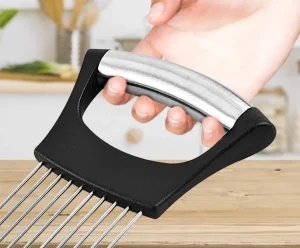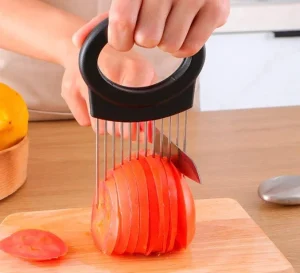
Baking soda is a versatile and eco-friendly solution to combat pests like cockroaches, fleas, ants, moths, mice/rats, and spiders. It’s safe, non-toxic, and easy to use around the home. Here’s how you can effectively use baking soda to deal with each type of pest:
1. Cockroaches
Why It Works: Baking soda reacts with the acids in a cockroach’s stomach, killing them effectively.
How to Use:
- Mix equal parts baking soda and sugar in a shallow dish or sprinkle the mixture in areas where cockroaches are active.
- The sugar attracts them, and the baking soda does the rest.
- Place the bait near cracks, under sinks, or behind appliances.
2. Fleas
Why It Works: Baking soda dehydrates fleas and their eggs.
How to Use:
- Sprinkle baking soda liberally on carpets, pet bedding, and upholstery.
- Use a stiff brush to work it into the fibers, then leave it for several hours or overnight.
- Vacuum thoroughly to remove fleas, eggs, and baking soda residue.
- Repeat weekly for effective flea control.
3. Ants
Why It Works: Baking soda interferes with ants’ digestive systems when ingested.
How to Use:
- Mix equal parts baking soda and powdered sugar.
- Sprinkle the mixture along ant trails, near entry points, and around the kitchen.
- The sugar lures ants, while the baking soda disrupts their metabolism.
4. Moths
Why It Works: Baking soda absorbs moisture and odors that attract moths.
How to Use:
- Place sachets filled with baking soda and a few drops of essential oil (like lavender) in closets, drawers, or storage boxes.
- For extra protection, sprinkle baking soda on carpets and vacuum after a few hours to deter moth larvae.
5. Mice and Rats
Why It Works: Baking soda produces gas that rodents cannot expel, which eventually kills them.
How to Use:
- Combine baking soda with peanut butter or flour to make a bait.
- Place small portions in areas where you’ve noticed rodent activity, such as along walls or in hidden corners.
6. Spiders
Why It Works: Baking soda acts as a natural deterrent for spiders.
How to Use:
- Sprinkle baking soda around the perimeter of rooms, under furniture, or in dark corners where spiders hide.
- Alternatively, mix baking soda with a few drops of peppermint essential oil for enhanced spider repellence.
Additional Tips:
- Always reapply baking soda after cleaning or vacuuming to maintain its effectiveness.
- Combine baking soda with natural deterrents like vinegar, essential oils, or diatomaceous earth for stronger pest control.
- Monitor pest activity to determine if repeated treatments are necessary.
By using baking soda, you can keep your home pest-free without resorting to harmful chemicals. It’s a simple, cost-effective, and natural solution!

“Does anyone know what this is?” I found it in a bag of kitchenware items at the secondhand store.

You’re not alone if you’ve ever been left wondering what the purpose of a weird kitchen appliance is when you’re staring at it. We’re going to solve the puzzle of one such tool—the onion and vegetable slicer—today.
Have you ever found it difficult to cut vegetables, such as onions, evenly? Do you wish you could get those perfectly thin slices faster and more effectively? You don’t need to search any farther! Maybe an onion and vegetable slicer is the answer you’ve been looking for.
What what is an onion and vegetable slicer, then? It’s essentially a kitchen utensil that makes slicing onions and other veggies very easy. Usually, these useful devices have a base with slots or blades.
An onion and vegetable slicer’s main goal is to produce accurate, consistent slices. This tool helps you create uniform thickness in your slices, which is very useful when you’re cooking or plating items that need to be cooked evenly.
An onion and vegetable slicer is very simple to use. As you cut, it gives the vegetables support and stability. It is especially useful for little or asymmetrically shaped veggies that are difficult to hold stable in your hands alone. You’ll save time and work in the kitchen because the blades or slots are made to cut food into thin, even slices.

Vegetables were traditionally sliced by hand using knives. But as technology developed, people started creating tools to speed up and improve the efficiency of the process. Adjustable blade manual vegetable slicers first appeared in the late 19th and early 20th centuries. With the help of these slicers, users could quickly achieve a level of precision that was difficult to achieve by hand by adjusting the thickness of the slices.
Significant developments in kitchen equipment also occurred with the onset of industrialization. The mid-1900s saw the rise in popularity of electric food slicers. Onions and other vegetables could be sliced with these devices, which are frequently used to slice meats and cheeses.
Manufacturers realized over time that they needed specialized slicers made just for onions and other vegetables. Usually, these slicers included slots or blades designed to cut thin, even slices. They gained popularity among home cooks who wished to expedite the process of preparing meals.
You may be asking where to get an onion and vegetable slicer now that you know what one is. These culinary implements can be found in many different shops and online marketplaces. Here are some alternatives to think about:

Kitchenware Stores: Look into specialty cooking supply stores or kitchenware stores in your area. They frequently have a large assortment of cooking tools, such as slicers for vegetables and onions. Ask the employees at the store for help or look for them in the kitchen tool department.
Online retailers: There are a ton of amazing kitchen gadgets available on the internet. Onion and vegetable slicers are widely available from major online retailers such as Amazon, Walmart, and Target. To make an informed decision, you may quickly browse through several models, evaluate costs, and read user reviews.
Thrift Stores and Yard Sales: These locations, like the one where you discovered your mystery slicer, are excellent for finding reasonably priced kitchenware. You may find an excellent-condition onion and vegetable slicer for a fraction of the original cost.
Don’t forget to select a slicer based on your requirements and tastes. Think on things like the kind of veggies you’ll be slicing, the slicer’s size, and how simple it is to use and clean.
An onion and vegetable slicer can be a useful addition to your kitchen toolkit, regardless of your level of culinary expertise or need to streamline meal preparation. So go ahead and choose the one that works best for you, and bid adieu to irregularly sliced vegetables and onions!



Leave a Reply